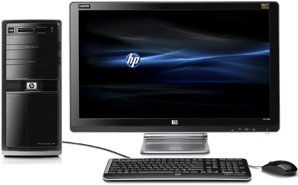 Does your PC seem to be running as slow as cold molasses these days? Over time all Windows-based computers get clogged up with all kinds of “debris” and slow down, and if a little maintenance isn’t done from time to time they will eventually slow to a crawl. Here are a few tips for keeping your PC running like the speed demon it was when you first took it out of the box:
Does your PC seem to be running as slow as cold molasses these days? Over time all Windows-based computers get clogged up with all kinds of “debris” and slow down, and if a little maintenance isn’t done from time to time they will eventually slow to a crawl. Here are a few tips for keeping your PC running like the speed demon it was when you first took it out of the box:
1 – Install top-quality anti-virus and anti-spyware programs and direct them to do daily scans of the hard drive. Not only can malware slow down your computer faster than any other problem you can think of, it can also help crooks steal your personal and financial information – indeed your very identity! Do this before you do ANYTHING else. I use and recommend Microsoft Security Essentials and Adaware Pro.
2 – Once a month or so run Windows’ native hard drive maintenance utilities. Disk Cleanup will remove all the unused and orphaned files that end up littering the hard drive and slowing things down while Disk Defragmenter will put all the remaining files in contiguous blocks. Having your files in “one piece” allows Windows to access, load and manipulate them faster. You can find these utilities in Windows 7 by clicking Start > All Programs > Accessories > System Tools.
3 – To free up valuable disk space and make your hard drive perform more efficiently, uninstall any programs, toolbars, or other types of software that you know you will never need or use. In Windows 7 click Start > Control Panel > Uninstall A Program. You will be presented with a list of all the software packages that are installed on your PC and you can simply select the ones you wish to remove and Windows will uninstall them for you.
4 – Instruct Windows to only load at Startup the programs and utilities that you really need to have running at all times. Everything else should only be loaded as needed. In Windows 7 click Start > Run then type msconfig in the text box that appears. Click OK then click the Startup tab in the Configuration Editor window that pops up. You’ll see a list of programs that are set to load automatically every time Windows boots up. Simply uncheck the boxes beside all non-essential programs then click OK. You will then be prompted to restart the PC, after which you will have a leaner, faster running Windows installation.
5 – Add more RAM. On the hardware side, nothing is more effective at speeding up a PC than adding more memory to the system. Yes, Microsoft says that Windows 7 will run just fine with 1 Gigabyte of RAM, and it will. But add another Gig or more and you’ll be amazed at the difference in speed.
6 – If you regularly use graphics intensive programs you should consider investing in a stand-alone video card for your PC. The integrated video circuitry built in to most motherboards works well, but it slows down your computer by stealing both CPU cycles and RAM space from the other tasks you use your computer for. But before you purchase a video card, make sure you have an open slot on the motherboard to accept it. You also need to make sure your PC’s power supply is hefty enough to power it. If you’re unsure about either of these contingencies, I highly recommend that you take your PC with you to the computer store and let their techs advise you.
7 – Keep your computer’s internals free of dust. The fans inside your PC’s case draw in lots of dust and debris which coats the electronic parts causing them to overheat and perform poorly. If enough dust builds up on those parts it can cause random system errors and even complete system failure. Every 90 days or so disconnect all the cables from the PC, then carry it outside and remove the access cover. Using a can of compressed air (NOT an air compressor), blow all the dust and debris from the computer parts found therein. Be especially careful not to touch anything inside the case with your body, your clothing, the “straw” on the compressed air can or anything else. Pay special attention to the power supply, the fans and underneath the motherboard. Note: This step applies only to desktop PC’s, not portables.
Well, there you have it. By following some or all of the recommendations above you can always enjoy that “new PC” experience.
About the author: Rick Rouse is the owner of RLROUSE.COM. He is also an A+ Certified computer technician with over 30 years of experience in the computer industry.